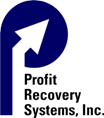 TEM Insider
TEM Insider
Mobility Management: Moving Chaos to Control
Written by Richard Janis, SVP of business development and enterprise marketing at Asentinel
July 3, 2012
There is much “noise” in mobility management of late; rarely does a day pass without a new article or tweet on the topic from Gartner, Aberdeen or Forrester. It seems most every conversation about addressing the challenges of telecom ultimately reverts back to mobile services and verbiage such as bring your own device (BYOD), mobile device management (MDM), corporate liable (CL) vs. individual liable (IL) or simply…optimization. While all of this attention and visibility is great, the complexity of the problem can easily cloud the solution.
Mobility Management addresses the lifecycle of a mobile asset from its procurement and adoption as a network asset, through its use in the enterprise until its retirement. This creates a dynamic environment requiring visibility and control at every step, from device and plan selection to usage identification and policy monitoring and enforcement.
Addressing the mobile explosion has brought out wireless consultancies, specialists, and IT providers offering scores of Mobility services. These suppliers can block an “Angry Birds” download, write a proper use policy, or lock on demand one of the 120,000 cell phones that are left in Chicago cabs each year (yes, 120,000. Crazy, right?).
But what many of these experts fail to provide is the necessary long-term oversight and enterprise-centric perspective that the market demands. In order to deliver results, proposed solutions must be comprehensive, detailed and aligned. The remedy can’t be implemented in a silo or as a Band-Aid. It must be flexible, complete, cost-effective, well supported and be committed to by the organization. It must serve the entire lifecycle.
Asentinel has developed an integrated suite that combines technology, processes and people. While the solutions are often referred to by their functionality (Inventory Expense Management, MDM, eProcurement Catalog, Contract Control and Logistics and Fulfillment are a few), one commonality is that each element addresses the “why”, and then the “how”. With this principle, the baseline can be identified and understood, visibility and control can be delivered and the concept of truly managing the unmanageable is defined.
When considering implementing a Mobility solution, companies should remember to consider the basic premise of “Why do I need this? What am I attempting to solve? How do I keep my arms around and eyes on the plethora of activities that ensure a comprehensive solution to mobility?” That foundation is the first step in moving from chaos to control.
About Richard Janis
Richard graduated Cum Laude with a BS from State University of New York and Cum Laude with a MBA from Christian Brothers University. He has served as Asentinel’s Vice President of Sales since its inception. He has 25 years of experience in the telecom and technology arenas including National Account Manager at MCI and VP of Sales with Qwest and Global Crossing. He also has been involved in a number of early-stage companies serving in executive leadership positions.

